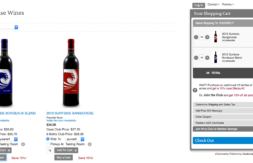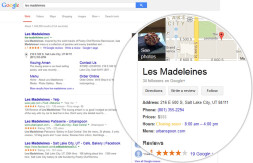Successfully Transitioning Your Website Using 301 Redirects
When online merchants evaluate new content management or ecommerce software for their websites, they are often concerned about transitioning from their old website format to a new one. This concern is legitimate for multiple reasons. First and foremost, online merchants don’t want prospective customers that have bookmarked a page or linked from another site to end up at a dead end. The preferable result is to have the customer land on the new page. The second concern relates to the search engines. If a page on the merchant’s existing site ranks well on the search engines, they do not want to switch platforms and lose that page’s ranking. Fortunately there is a way to redirect those potential customers to a new page while still maintaining page rank. The solution is a 301 redirect.
A 301 redirect’s status code means “moved permanently.” A 301 redirect does two things:
1. If a customer attempts to visit an old page (http://www.yourdomain.com/YOUR_OLD_PAGE), she is automatically redirected to (http://www.yourdomain.com/YOUR_NEW_PAGE)
2. It lets the search engines know that they should now index and display the new page without compromising search results.
There are other ways of redirecting pages including but not limited to using a META Refresh, Javascript, or a 302 Redirect (this is a temporary redirect). While these redirects will handle the customer scenario well, they fail at handling the search engine ranking concern. Therefore it is best to use 301 redirects when transitioning to new ecommerce or content management system.
How does one go about implementing 301 redirects? Then answer depends upon the platform that a website is on and to some degree, access to the controls of the web server. When in doubt, a merchant should always ask their website hosting company what they recommend. The two most common ways 301 redirects are created are:
1. Using Server Side Scripting – This assumes that the pages on the old site use a server side scripting language such as PHP or ASP. Following are two examples of code that you would put into the old file:
ASP
<%
Response.Status=”301 Moved Permanently”
Response.AddHeader “Location”,”http://www.yourdomain.com/YOUR_NEW_PAGE”
%>PHP
<?
Header( “HTTP/1.1 301 Moved Permanently” );
Header( “Location: ://www.yourdomain.com/YOUR_NEW_PAGE ” );
?>
2. Using a .htaccess file- For this method to work, the web server must be running Apache. Essentially, the merchant can add lines of code to the .htaccess file such as:
Redirect 301 OLD_DIRECTORY/YOUR_OLD_PAGE http://www.yourdomain.com/NEW_DIRECTORY/YOUR_NEW_PAGE
If the old files do not use server side scripting and the web server does not support .htaccess files, there are other ways to create 301 redirects, but again, merchants should contact their web hosting company for more information.
After implementing a 301 Redirect, it is important to make sure the redirect is working properly. Also, if by chance a merchant happens to miss a file or two, a well designed 404 (File Not Found) page is also a good idea.














